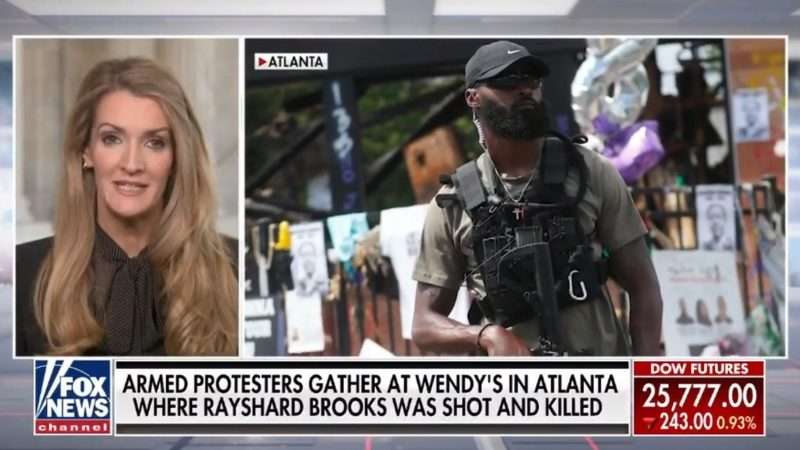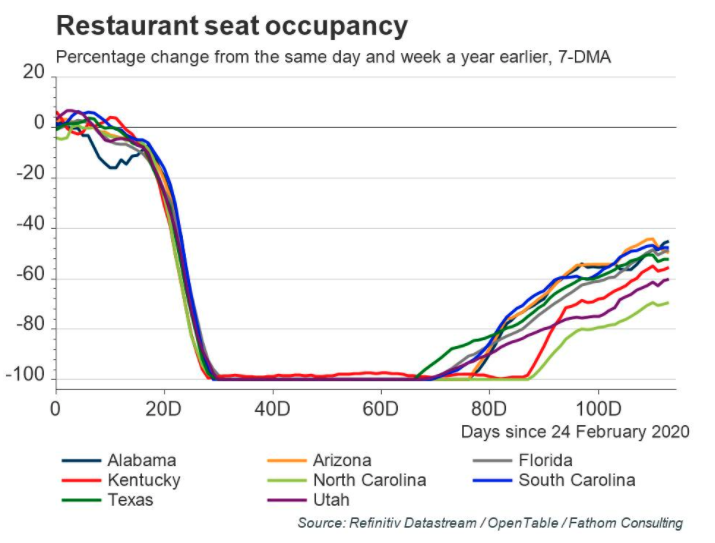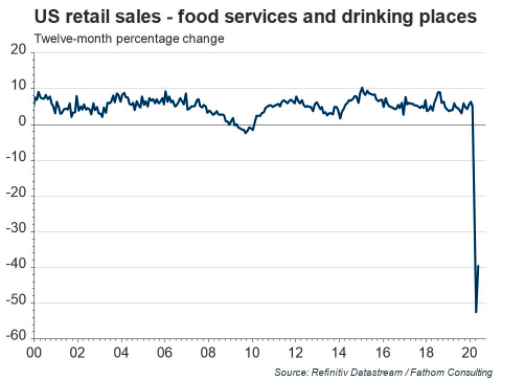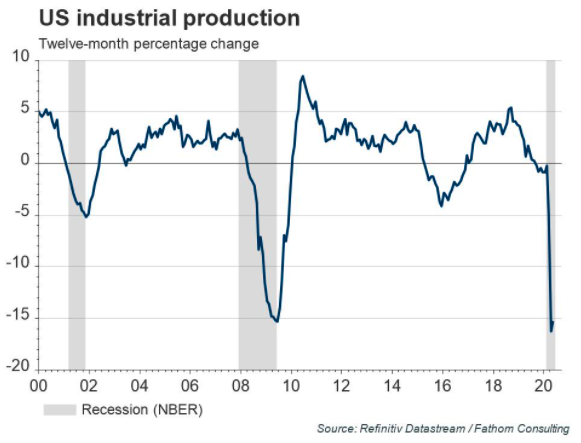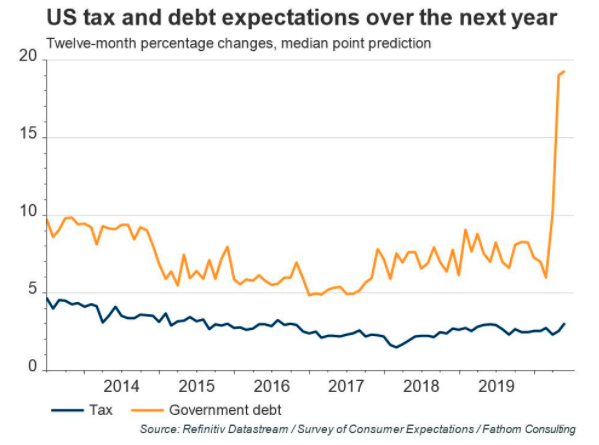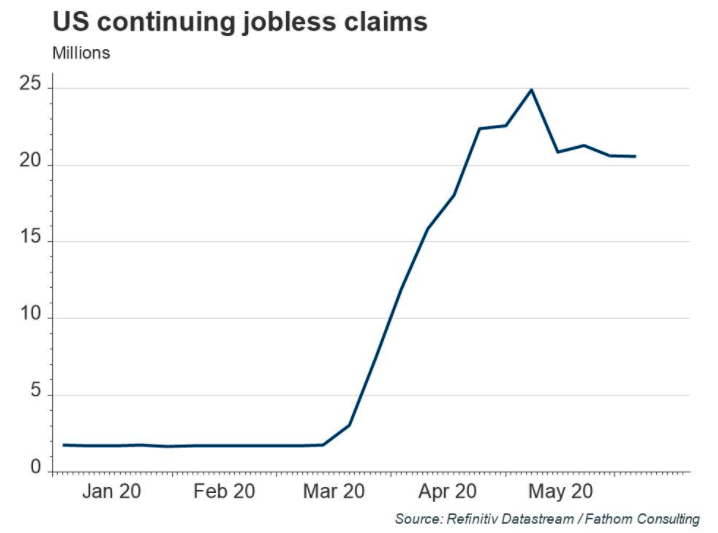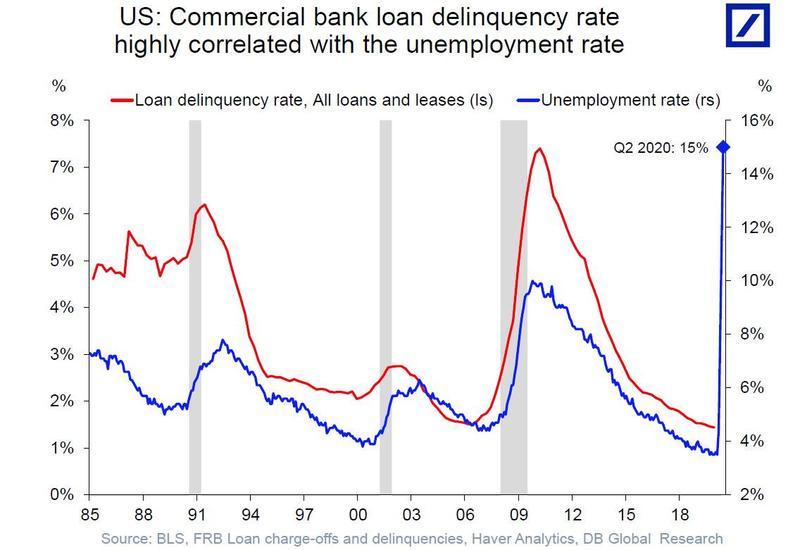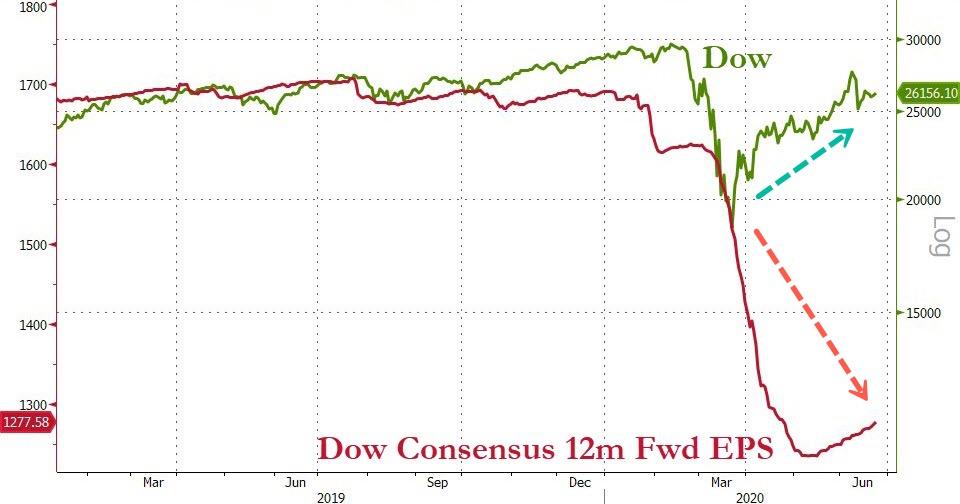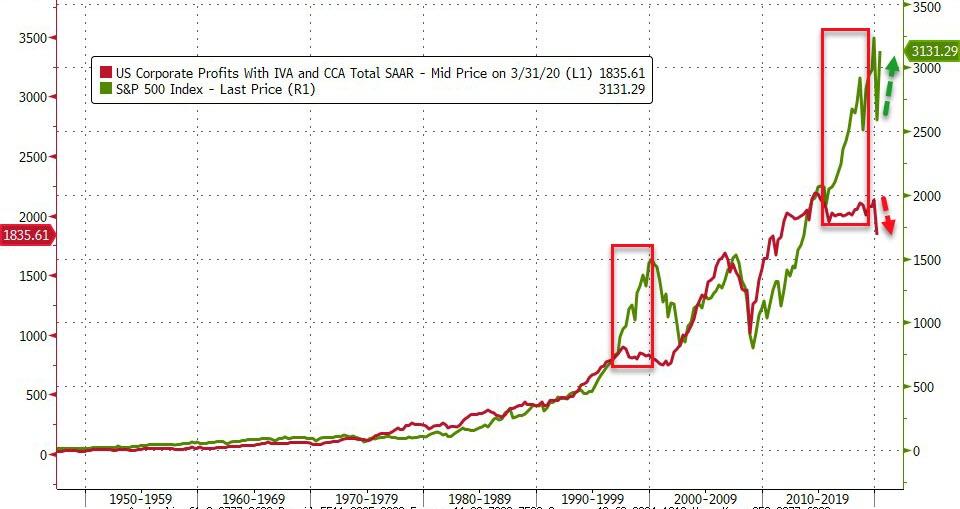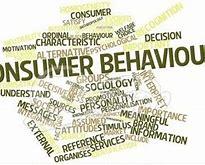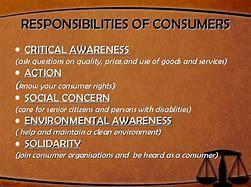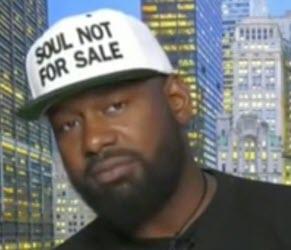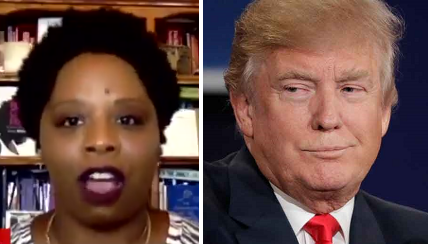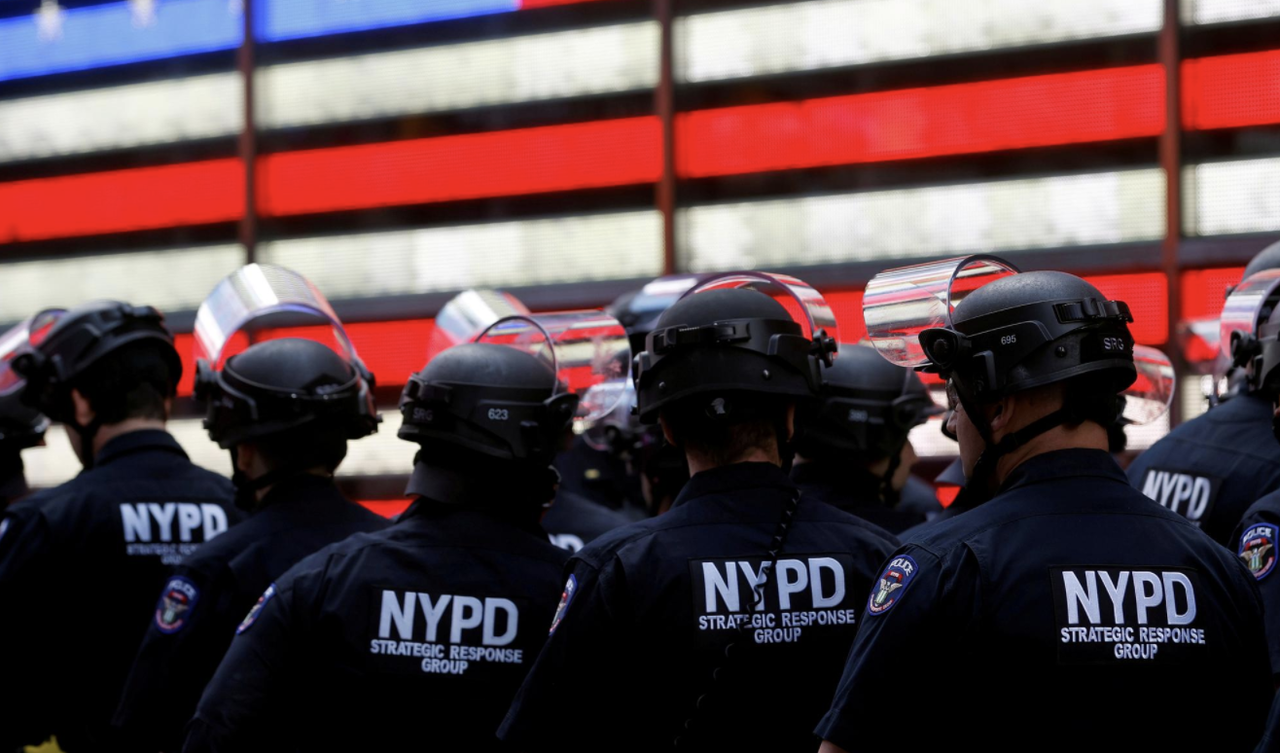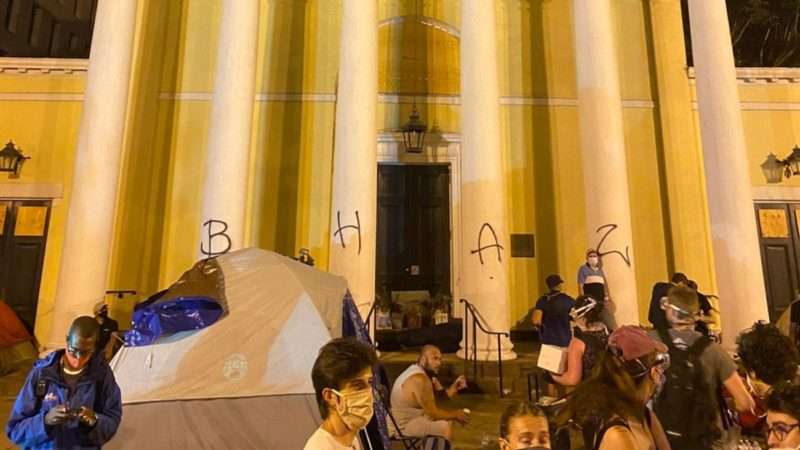
A few days ago, someone spray-painted “BHAZ” (for “Black House Autonomous Zone”) on the pillars of St. John’s Episcopal Church, the site of President Donald Trump’s notorious June 1 photo op during protests against police brutality in Washington, D.C. Under the D.C. Code, that act of vandalism, assuming the damage costs less than $1,000, is a misdemeanor punishable by a maximum fine of $1,000 and up to six months in jail. But under an “anti-lynching” bill that is part of the police reform packages backed by House Democrats and Senate Republicans, the same act could qualify as a felony punishable by up to 10 years in prison.
Sen. Rand Paul (R–Ky.) uses that example to illustrate the potential unintended consequences of the Justice for Victims of Lynching Act, a.k.a. the Emmett Till Antilynching Act, which covers any conspiracy to violate various federal civil rights laws. If more than one person was involved in the church graffiti—if one bought the spray paint and another wrote the letters, for example—that would amount to a conspiracy. And Paul notes that the church had earlier been targeted by arsonists who spray-painted “Matthew 19:24” and “God is still watching” on the building. That context, he argues, suggests that the church was targeted because of its religious character, which violates 18 USC 247, one of the provisions cited in the anti-lynching bill.
“Had the Emmett Till Antilynching Act been federal law, those who conspired to deface St. John’s Church could be prosecuted for lynching and potentially lose their liberty for up to a decade,” Paul wrote in a letter to his Senate colleagues yesterday. “Those who argue that the government will not prosecute such acts as a lynching are willfully blind to the flaws within our criminal justice system….We cannot fight injustice by passing laws that will create more injustice by equating vandalism with lynching.”
If you think it is implausible that federal prosecutors would charge black protesters with lynching in a case like this, I have two words for you: Tiffany Harris. She is the black woman accused of slapping three Jewish women in the Crown Heights neighborhood of Brooklyn last December, a series of assaults that the Justice Department charged as federal hate crimes under 18 USC 249, another provision mentioned in the anti-lynching bill. The decision to pile federal charges on top of the state charges that Harris already faced dramatically increased the maximum penalty and made it possible to punish her twice for the same conduct. That intervention was U.S. Attorney Richard Donoghue’s attempt to make a statement about anti-Semitic attacks at a time when reports of such crimes were rising in New York City.
The constitutional rationale for the law under which Harris was charged, which applies to assaults committed “because of” the victim’s “actual or perceived race, color, religion, or national origin,” is that it serves to eliminate “the badges, incidents, and relics of slavery,” a congressional power inferred from the 13th Amendment. In other words, Donoghue thinks prosecuting a black woman for slapping Jews in 2020 is authorized by the amendment that abolished slavery in 1865. Given such precedents, it is not hard to believe that, depending on the political incentives, a black vandal could be prosecuted for lynching under a law named after a black Mississippi teenager who was gruesomely murdered for purportedly flirting with a white woman in 1955.
Federal hate crime laws invite capricious, politically motivated prosecutions that have little to do with the facts of the case or justice for the offender. The anti-lynching bill, as currently written, would magnify that problem. Paul’s solution is an amendment limiting the definition of lynching to cases involving “serious bodily injury,” which fits the general understanding and historical meaning of the term and would prevent prosecutors from applying it to minor crimes such as vandalism.
Given that lynching, assault, and murder are already illegal under state and federal law, you may wonder, why is this bill necessary in the first place? The “findings” section offers no real explanation, except to say that the legislation “recognizes the history of lynching in the United States.” I asked Paul whether that seems like a satisfactory justification for a new criminal law.
“Most criminal law should be adjudicated at the state level,” Paul replied by email. “Crimes that involve conspiracies can and have been abused, so care should be taken in crafting new conspiracy laws. If the national conscience requires a federal law to express its symbolic support for laws that already outlaw lynching, I will not stand in the way as long as the new law of conspiracy clearly defines lynching as murder or attempted murder or at the very least serious bodily harm or an attempt at serious bodily harm. I do not want anyone—black, white, or brown—to be given ten years in prison for slapping someone or painting graffiti on a church.”
That seems like a reasonable position, especially if you agree with Paul that the criminal justice system is excessively and arbitrarily punitive—a problem of special concern to African Americans. Yet Paul has been pilloried for opposing the current version of the anti-lynching bill, which sacrifices the rights of criminal defendants for the sake of symbolism. “Does America need a win today on racial justice?” Sen. Cory Booker (D–N.J.) said in response to Paul’s proposed amendment earlier this month. “Does the anguished cries of people in the streets? It may not cure the ills so many are protesting about, but God, it could be a sign of hope.”
Far from a sign of hope, this bill is cause for despair about the legislative process. When Congress uses its power to create new criminal penalties, threatening people with longer prison sentences than would otherwise apply, it has a duty to exercise more thought and care than this legislation reflects.
from Latest – Reason.com https://ift.tt/2B9ZYlN
via IFTTT
